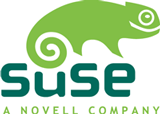
Phil Windley in a recent Between the Lines posting entitled 'Split Novell?' mused that Novell's relatively poor identity management business performance (in comparison to the industry in general) was perhaps a result of poor strategic synergy between their operating system (Suse) and IDM product lines. Not being a financial follower of the IDM market I cannot say for certain whether he is right or wrong, but I do agree with his basic assertion that Novell should be split in two. For a while now I have felt that their emphasis on Suse Linux is to the detriment of their excellent product offerings in the identity and network services markets such as eDirectory/iManager, IDM, iFolder and ZenWorks.
Commoditising the operating system
The success of Novell during the 80's and early 90's was due in no small part to their tried and tested Netware operating system. Unfortunately the operating system market has changed, Windows has matured and Linux has gained a strong foothold as a ubiquitous, free platform for reliably hosting network services. With the gradual demise of Netware, Novell had an opportunity to step out of the low-level operating system market and focus on the aspects of their business that where going strong. In this process they could have left the grunt work of maintaining the base operating system to partners such as Red Hat, Suse and even Microsoft. This would have provided a clean and relatively open migration path for existing Netware customers who are committed to a Novell infrastructure (i.e. eDirectory/Groupwise/Zenworks) and for the most part ignore the underlying operating system so long as it was stable and supported by a reputable party.
Instead of adopting a lightweight approach Novell opted to maintain their tried and true business model through the purchase Suse Linux as a straight replacement for Netware in their product arsenal. This meant that instead of placing development emphasis on getting their network and identity products seamlessly working on a range of partner operating systems attention was focused on fusing Novell's existing identity and network services into Suse Linux. The culmination of these efforts has resulted in Open Enterprise Server (OES), an excellent Netware 6.5 replacement that continues with the Novell tradition of marketing a tightly bound operating system/network services stack. Unfortunately this focus on a closed server/services model has been to the detriment of the network and identity services' deployment flexibility and marketing appeal as these valuable offerings must be coupled to and marketed alongside their related server products.





